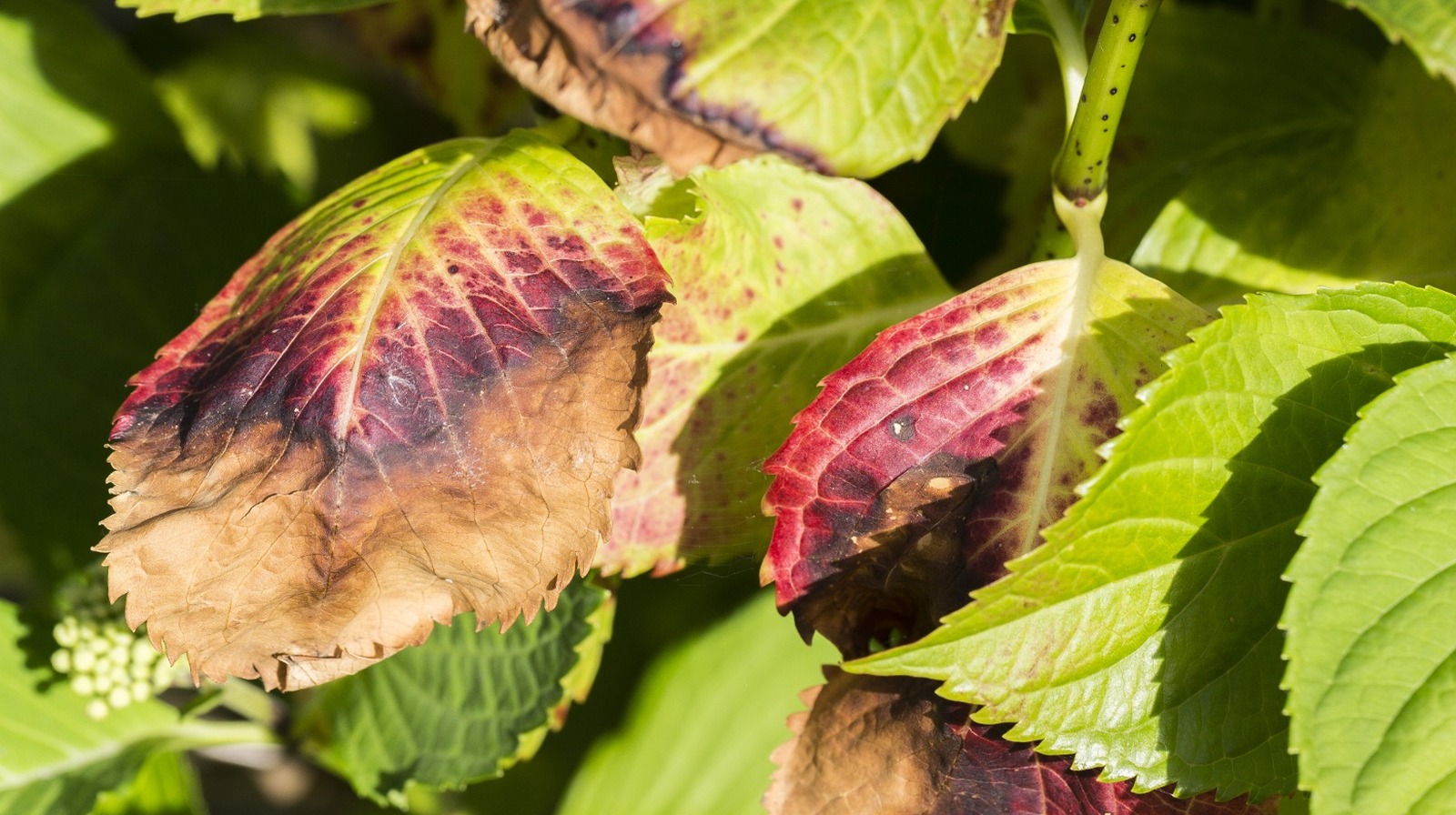Indicators on Hydrangea Leaves Turning Yellow You Should Know
The Only Guide to Hydrangea Leaves Turning Yellow
Table of ContentsHydrangea Leaves Turning Yellow Fundamentals ExplainedThe 5-Second Trick For Hydrangea Leaves Turning YellowWhat Does Hydrangea Leaves Turning Yellow Do?10 Easy Facts About Hydrangea Leaves Turning Yellow ShownUnknown Facts About Hydrangea Leaves Turning YellowFacts About Hydrangea Leaves Turning Yellow Revealed
One possibility is that the plant is not getting sufficient sunlight. During the cold weather, the days are shorter, and the sunlight is not as extreme, so make certain to position your Hydrangea in a spot where it will access the very least 6 hours of sunshine every day. One more factor for Hydrangea yellow leaves in winter months can be way too much water.The fallen leaves may be turning yellow due to temperature level anxiety. Hydrangeas like cooler temperature levels, so if the plant is in a spot that gets too hot or also chilly, the leaves will turn yellow. If you assume temperature stress could be the concern, try moving your Hydrangea to a various location or protecting it from the components with a cloth cover.
New growth will be observed in early springtime, when you'll discover eco-friendly vegetation growing from stems that might have shown up dead. However, if your leaves are transforming brown in springtime or summertime, there are likely various other elements at play. The accurate reasons depend on the selection and their growing problems, yet as a whole, brown hydrangea leaves signify dehydration and wilting in the warmth
What Does Hydrangea Leaves Turning Yellow Do?

Wilting is triggered by lack of wetness, indicating there are a few great methods to use to avoid this from taking place. Give your hydrangeas a healthy glug of water every couple of days when the temperatures are climbing up high, and deal with the soil to better preserve moisture. After watering, a dab of mulch around the base of each plant must aid with this by keeping moisture in the soil.
This interrupts fungis spores from settling. "The Botrytis fungus thrives in great and damp problems, so stay clear of showering the entire plant when watering and just water at the origins," shares Roy Nicol, a Master Gardener. If you have actually missed the opportunity for prevention and are handling an infection you must eliminate all dead or badly contaminated fallen leaves from the plant and damage them to avoid additional spread.
More About Hydrangea Leaves Turning Yellow
As a general general rule, we suggest eliminating leaves when they are 50% brownish or greater. While browning triggered by any kind of reason can't be turned around, taking the restorative action defined above will certainly urge the plant to expand new fallen leaves so the damaged fallen leaves either diminish naturally or can be gotten rid of by the garden enthusiast.
Hydrangeas need to be watered just when the leading few inches of soil are completely dry, and need to be given a complete soaking each time. Underwatered hydrangeas are most likely to have yellow, wilting, and sagging leaves. Raise the frequency and amount of watering for your shrub to help address this concern. Hydrangeas choose rather damp (yet not soggy) dirt, so provide the roots a great saturating and allow water to be soaked up right into the soil prior to using much more.
The means you take care of hydrangea leaves transforming yellow depends on the Go Here crucial issue creating the yellow leaves. This can be challenging to establish, once you do you will be able to adjust your plant treatment accordingly to look after the trouble. As pointed out before, a typical problem with hydrangeas is vitamins and mineral deficiencies.
How Hydrangea Leaves Turning Yellow can Save You Time, Stress, and Money.
During the top growing period, you ought to water at a rate of about 1 inch weekly. If you are fretted about not correctly watering your hydrangeas, there are a number of points you can do. Including compost to the base of the plants over the root zone assistance to regulate the temperature around the hedge and retain water in the dirt.
You can buy and set up easy watering globes. Watering worlds hold water in them and slowly release this water into here the dirt as the ground ends up being dry. Merely load the globe with water, stick the spout into the soil within the root area near the base of the plant, and leave it in position up until all the water is gone.
If it is too severe, some plants will certainly never ever recoup from transplant shock and will certainly proceed to decline until they die. Minimize transplant shock by consisting of as many roots as feasible when excavating up your plant to move it. Be certain to give even more water than typical in the weeks following planting to help your plant recover and expand brand-new roots.
Excitement About Hydrangea Leaves Turning Yellow
To stay clear of spreading fungal illness, be certain to thouroughly tidy and disinfect any kind of trimming tools prior to and after use. You can attempt to flush the origins with water check this site out to remove excess fertlizer.
Your hydrangea plant prefers well-drained, wet soil. If the pot has bad drainage, or your soil is swamped, the leaves will certainly start to transform yellow. Overwatering makes the dirt soggy (Hydrangea Leaves Turning Yellow). Swamped and soggy soil can result in stunted growth, fallen leave staining, and, worst of all, rot fungal diseases. Although over-watering can be dangerous, under-watering is not an option either.
If you do not sprinkle your hydrangea plant for more than a week, the fallen leaves will start turning yellow. Fungal diseases that attack the plants have a tendency to reveal indicators on the roots and the leaves of the plant.
The Facts About Hydrangea Leaves Turning Yellow Uncovered
:max_bytes(150000):strip_icc()/GettyImages-13748759001-8a80ca41bf6b46ffa27f748339a58287.jpg)